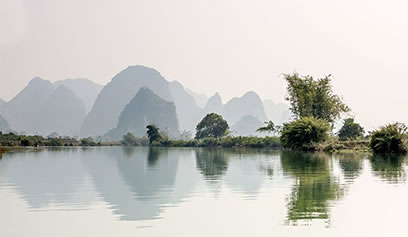search for a Trip
Chengdu is the capital of Sichuan Province, and it is one of the largest megacities in China.Chengdu is an important central city in western China, a national historical and cultural city, an international comprehensive transportation hub city, a western economic center, a western science and technology innovation center, a western foreign exchange center, and a national advanced manufacturing base. It is also an important birthplace of the ancient Shu civilization and the center of the "Land of abundance". The 31st Summer University Olympic Game was held in Chengdu city.
Chengdu Geographical Guide:
Chengdu is located in southwest China, the western Sichuan basin, the eastern edge of the Qinghai-tibet plateau. Its west is given priority to with deep hills and mountains, and east is mainly composed of plains, terraces and part of the low hills. Chengdu plain is belong to subtropical monsoon climate zone, Chengdu possess abundant heat, rainfall and is clear in four season.
Chengdu historical Guide:
Chengdu city, also known embroidery city. Chengdu has a long and unique history and a profound cultural heritage. As early as about 4500 to 3700 years ago, the Chengdu Plain has appeared a series of settlement centers of ancient Shu ancestors known as "Baodun Culture". These settlement centers have been rammed with walls and places for worship and gatherings. According to the large number of historical relics unearthed from the "Jinsha Site", it can be basically inferred that from the late Yin and Shang Dynasty to the early Western Zhou Dynasty, Chengdu has become the central capital of the ancient Shu Kingdom. In 316 BC, Qin Empire destroyed Shu Kingdom and first set up Shu state and Chengdu County. In 311 BC, the construction of big cities and small cities was recognized by later generations as the documented symbol of Chengdu
Chengdu Administrative Guide:
By 2023, Chengdu has jurisdiction over 12 municipal districts, 3 counties and 5 county-level cities, with a total area of 14,335 square kilometers and a permanent resident population of 21.403 million.
Chengdu Economy Guide:
In 2023, Chengdu's regional GDP reached 2,207.47 billion yuan. By the end of 2021, there were 130 national-level innovation platforms, 54 national enterprise technology centers, 312 world top 500 enterprises and 20 foreign consulates.
Chengdu Education and School Guide:
By the end of 2023, there were 65 universities, 643 regular middle schools, 647 regular primary schools and 2,840 kindergartens in Chengdu
Top universities in Chengdu:
1. Sichuan University, 2. University of Electronic Science and Technology of China, 3. Southwest Jiaotong University, 4. Southwestern University of Finance and Economics, 5. Chengdu University of Technology, 6. Southwest Petroleum University , 7. Sichuan Agricultural University, 8. Chengdu University of Traditional Chinese Medicine, 9. Sichuan Normal University, 10. Chengdu Institute of Physical Education, 11. Chengdu University, 12. Sichuan Conservatory of Music, 13. Sichuan Film and Television Academy, 14. Southwest Minzu University
Chengdu Medical Guide:
By the end of 2023, there were 13,457 medical and health institutions in Chengdu, including 799 hospitals, 25 centers for disease control and prevention, and 21 maternal and child health care hospitals.
TOP hospitals:
1. West China hospital of Sichuan university, 2. West China second hospital of Sichuan university, 3. West China fourth hospital of Sichuan university, 4. Hospital of Stomatology Sichuan University, 5. Sichuan Provincial People’s hospital, 6. Hospital of Chengdu University of TCM, 7. the First People's Hospital of Chengdu, 8. the Second People's Hospital of Chengdu, 9. the third people's hospital of Chengdu,
Chengdu Railway Guide: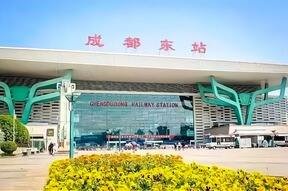
Five electrified railway lines of Chengdu-Chongqing line, Baocheng line, Chengdao line and Suizhou line meet in Chengdu; Chengdu high-speed railway (including Chengde intercity railway) and Chengpu high-speed railway are in operation; expansion and transformation of Chengdu-Lan railway and Chengdu-Kunming railway are all under construction.
Chengdu Railway Stations Guide:
1. Chengdu East Railway Station has 14 and 26 lines.
2. Chengdu station scale of 10 units and 18 lines.
3. Chengdu South Railway Station has a platform scale of 5 units and 11 lines
4. The scale of Chengdu West Railway Station is 4 sets and 8 lines.
Chengdu Airports Aviation Guide:
Chengdu has two international airports, Chengdu Shuangliu International Airport and Chengdu Tianfu International Airport.
1. Chengdu Shuangliu International Airport is the oldest airport in Chengdu. It is the base airport o f Air China, Sichuan Airlines, Chengdu Airlines, China Eastern Airlines, Tibet Airlines and Xiangpeng Airlines, with a throughput of 30.13 million passengers in 2023.
f Air China, Sichuan Airlines, Chengdu Airlines, China Eastern Airlines, Tibet Airlines and Xiangpeng Airlines, with a throughput of 30.13 million passengers in 2023.
2. Chengdu Tianfu International Airport is a new airport started in use in 2021.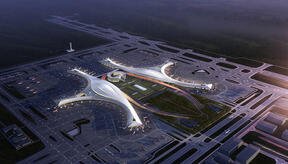 It is a 4F class international airport, the main hub of Chengdu international transportation. Chengdu Tianfu International Airport has currently completed two terminals, with a throughput of 44.785 million passengers in 2023. After the completion of all four terminals, the target throughput will be 90 million passengers per year.
It is a 4F class international airport, the main hub of Chengdu international transportation. Chengdu Tianfu International Airport has currently completed two terminals, with a throughput of 44.785 million passengers in 2023. After the completion of all four terminals, the target throughput will be 90 million passengers per year.
Chengdu Subway Guide
From the opening of the first Metro Line 1 in Chengdu on September 27, 2010 to December 2024, Chengdu has 19 lines of rail transit, and the length of the operating lines has exceeded 600 kilometers. In 2023, the total subway passenger transport volume was 2.11 billion passengers
Chengdu Consular Office Guide
Since the establishment of the US Consulate General in Chengdu in 1985, by June 2023, foreign countries had set up 20 consular offices in Chengdu. Chengdu is ranking third for the consular in the mainland of China and first in the central and western regions. The United Kingdom, Canada and other countries have visa centers in Chengdu besides the consular.
List of foreign institutions in Chengdu
1. Consulate General of the Federal Republic of Germany in Chengdu
2. Consulate General of the Republic of Korea in Chengdu
3. Consulate General of the Kingdom of Thailand in Chengdu
4. Consulate General of the Republic of Singapore in Chengdu
5. Consulate General of the French Republic in Chengdu
6. Consulate General of the Islamic Republic of Pakistan in Chengdu
7. The Australian Consulate General in Chengdu
8. Consulate General of the State of Israel in Chengdu
9. Consulate General of the Republic of Poland in Chengdu
10. The Swiss Consulate-General in Chengdu
11. Consulate General of the Republic of Austria in Chengdu
12. Nepal Consulate General in Chengdu
13. Consulate General of the Republic of Chile in Chengdu
14. Consulate General of the Kingdom of Spain in Chengdu
15. Consulate General of the Republic of Turkey in Chengdu
Consulate General of the Federal Republic of Brazil in Chengdu
The Consulate General of the Republic of the Philippines in Chengdu is waiting to be opened
The Consulate General of the Republic of India in Chengdu is waiting to be opened
The Consulate General of the Greek Republic in Chengdu is waiting to be opened
The Consulate General of the Argentine Republic in Chengdu is waiting to be opened
Main attractions of Chengdu
Du Fu’s Thatched Cottage:
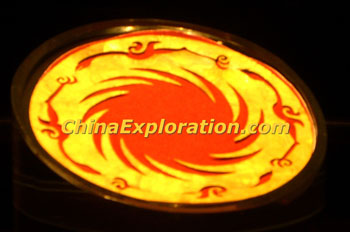 Du Fu's Thatched Cottage (Dufu Caotang) is the quaint former residence of one of China's most famous poets , Mr Dufu (712-70 AD). It was in Chengdu, at this small and simple house, that Du Fu was inspired to write more than 200 poems which are regarded today as masterpieces of realist poetry. In memory of the great poet, temples and pavilions were added to the site during the Song Dynasty. The exhibits here include a brief account of Dufu's life and some of his original calligraphy and poems. The complex also contains three imposing statues of some of China's greatest poets; Du Fu, Li You and Huang Pingjiang (the latter two were Song dynasty poets). Today, this is a pleasant site to visit, with nice buildings dotted about, teahouses and pleasant bamboo gardens to wander and explore. This site is also home to the Chengdu Du Fu society.
Du Fu's Thatched Cottage (Dufu Caotang) is the quaint former residence of one of China's most famous poets , Mr Dufu (712-70 AD). It was in Chengdu, at this small and simple house, that Du Fu was inspired to write more than 200 poems which are regarded today as masterpieces of realist poetry. In memory of the great poet, temples and pavilions were added to the site during the Song Dynasty. The exhibits here include a brief account of Dufu's life and some of his original calligraphy and poems. The complex also contains three imposing statues of some of China's greatest poets; Du Fu, Li You and Huang Pingjiang (the latter two were Song dynasty poets). Today, this is a pleasant site to visit, with nice buildings dotted about, teahouses and pleasant bamboo gardens to wander and explore. This site is also home to the Chengdu Du Fu society.
Temple of the Marquis of Wu:
The Temple of the Marquis of Wu (Wuhou Ci) is located in the outskirts of Chengdu, at the edge of the pleasant Nanjiao park. The site consists of a restored Tang dynasty temple, dedicated to the Shu dynasty prime minister and war strategist Zhu Ge Liang. Zhu Ge (181-234 AD) lived during the Three Kingdom's period and this character features largely in the famous historical novel, The Three Kingdom's written in the late Ming Dynasty. Today, there is a large temple here containing a statue of Zhu Ge and an impressive Three Wonders Tablet, so called because it contains exquisite examples of calligraphy, carving and poetry. The tomb of the founder of the Shu dynasty, Liu Bei, is also here. This is an interesting place for those knowledgeable in Chinese history and legend. Other travelers however, may find the site less engaging.
Wenshu Temple:
Wenshu Temple (Wenshu Yuan) is Chengdu's oldest and largest temple and is usually bursting with life and atmosphere. A temple was originally built at this site in the north of the city during the Tang Dynasty. The building today however is a Qing Dynasty construction consisting of an impressive collection of buildings containing some intricate and beautiful art and architecture. There are five halls at the complex, all with pretty tiled roofs, carved eaves and beautifully painted ceilings. There is also a Museum here detailing the history of the temple and displaying some wonderful examples of traditional calligraphy and painting.
The Giant Panda Breeding Research Institute:
The Giant Panda Breeding Research Base is the best place to see Chengdu's most famous residents. The city zoo is very depressing and best avoided but the institute 18km from the town center, houses 12 bears in good conditions. The panda has long been associated with China, and although they are no longer given as gifts to visiting officials, China's pandas still face the huge problem of extinction. The Museum here graphically details the bear’s reproductive problems and there is also a large Breeding ground at the site. Researchers here recently announced that they plan to give the pandas the drug Viagra in an attempt to raise numbers. These creatures are notoriously reluctant to breed and scientists hope that by giving the pandas Viagra, they will boost the bear's sex drive and improve the chances of reproduction.
Jinli Old Street
Jinli old Street is an ancient commercial street located in Chengdu, and it was restored and built by the Chengdu Wuhou Temple Museum, with a street length of 550 metres. It is an antique building in the late Qing Dynasty and early Civil War architectural style, with the Three Kingdoms culture and traditional Sichuan folk culture as its main content.
River Viewing Pavilion Park ( Wangjianglou Park ) :
The River Viewing Pavilion (Wangjianglou) park is a lovely, historic place with forests of 100 varieties of bamboo! The yellow columns of bamboo with their thin green leaves cast wonderful shade and make a exquisite sound when the wind blows. The pavilion is more than 30 meters tall, overlooks the Jin River (Jinjiang), and was once the symbol of Chengdu. The pavilion itself was built in memory of Xue Tao, a Tang Dynasty female poet who loved bamboo and wrote many poems here. She reportedly drew water from a well that is also in the park grounds.
Sino-Ocean Tai Koo Li Chengdu
Based on the ancient Dachisi temple, Chengdu Taikoo Li is an open, low-density block shopping and leisure center jointly with traditonal Chinese architecture of Dachi Temple, and it is also the most fasional destination in Chengdu due to its 3D vision. Taikoo has created the retail concept of "fast lane" and "slow lane", integrated culture and commerce in a unique way, and provided customers with diversified shopping and lifestyle experiences, which has become a unique urban destination in China.
Bamboo Art Village in Chongzhou
Bamboo Art Village in Chongzhou is situated at Daoming Town, about 40㎞ away from downtown Chengdu. The local government relies on the national intangible cultural heritage to develop its industry, making bamboo weaving attract young people to return home, help villagers get rich and change the rural landscape. Visitors can not only enjoy bamboo tea, but also enjoy the artistic and creative handicrafts of local bamboo weavers in the Bamboo Culture Museum. Experienced local bamboo weavers are able to create all kinds of handicrafts for personal tailor with different needs
Donganhu Lake Sports Park
Dongan Lake Sports Park is the main Stadium of the 31th World Summer University Olympic Game. It is located in Longquan District of Chengdu. Donganhu Sports Park contain a 40,000-seat integrated sports stadium, an 18,000-seat multi-functional stadium and a 5,000-seat swimming and diving stadium. The park also includes the Chengdu Universiade Museum, the Universiade Torch Tower and other landscapes.
Dujiangyan Dam Irrigation System:
The Dujiangyan Irrigation system is a miracle of ancient Chinese ingenuity. Before the completion of Dujiangyan, the plains around the Min River were prone to floods due to the fast moving Min River flowing down from its mountain source and meeting flat ground. It was in the Warring States period about 2200 years ago, that the engineer Li Bing and his son led the construction of the Dujiangyan irrigation system that tamed the Min River and irrigated the surrounding plains.
Qingchengshan Mountain:
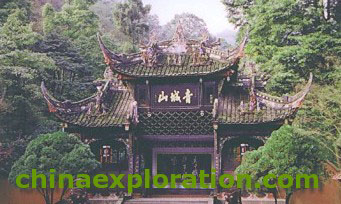 Mt Qingchengshan is one of the ancient cradles of Daoism. The mountain has numerous Daoist temples and sites along the paths to its peak. The area is green all year round and is known for its secluded tranquility. Jianfu Temple (Jianfu Gong) sits at the base of the mountain and is a large, well-preserved Daoist temple from the Tang Dynasty. About halfway up the mountain sits Tianshi Cave (Tianshi Dong) the temple and school of Zhang Daolin, a famous Daoist master who taught here and contributed greatly to spreading Daoism in China. The present Tianshi Cave buildings were built at the end of the Qing Dynasty. Lastly, near the peak sits Shangqing Temple, which was originally established in the Jin Dynasty, while the current temple buildings are Qing Dynasty constructions.
Mt Qingchengshan is one of the ancient cradles of Daoism. The mountain has numerous Daoist temples and sites along the paths to its peak. The area is green all year round and is known for its secluded tranquility. Jianfu Temple (Jianfu Gong) sits at the base of the mountain and is a large, well-preserved Daoist temple from the Tang Dynasty. About halfway up the mountain sits Tianshi Cave (Tianshi Dong) the temple and school of Zhang Daolin, a famous Daoist master who taught here and contributed greatly to spreading Daoism in China. The present Tianshi Cave buildings were built at the end of the Qing Dynasty. Lastly, near the peak sits Shangqing Temple, which was originally established in the Jin Dynasty, while the current temple buildings are Qing Dynasty constructions.
Sanxingdui Museum:
Sanxingdui, located in the city of Guanghan, 40 km from Chengdu, Sichuan Province, is recognized as one of the most important ancient remains in the world for its vast size, lengthy period and enriched cultural contents. The first Sanxingdui relics were discovered by a farmer in 1929 and excavation has continued ever since. During this period, generations of archaeologists have worked on the discovery and research of the Sanxingdui culture. In 1986, two major sacrificial pits were found and they aroused widespread academic attention around the world. The Sanxingdui finds are exciting, but they remain enigmatic. No texts have been found, nor is there any mention of this culture in the records of other countries. Analysis of lead and other elements in the bronzes indicates sources similar to those of other cultures along the lower reaches of the Yangtze River. At this point, however, the unique culture that produced these artifacts remains a mystery. The whole design of the museum is simple, but with a solemn style. The flame is peculiar. The main object is a deformed spiral. It has the poetic charm with historical, geographical features and cultural art. It fully shows the broadness and profundity of Sanxingdui culture. The designs of Sanxingdui Museum have many architectural breakthroughs. Modern Technologies (sound, light, and electricity) are used to show the charm of the ancient site. The displays also provide foreigners with information about the history of China.
Jinli street:
Dating back to the Qin Dynasty (221BC-206BC), Jinli Street in Chengdu was one of the busiest of commercial boulevards of the Kingdom of Shu, during the Three Kingdoms Period (220-280). It is thus known as the "First Street of the Shu Kingdom." At the time of the Three Kingdoms period, the production of the famous Shu brocade (a rich silk fabric with raised patterns in gold and silver) was centralized at the southern bank of the Jinjiang River in Chengdu, adjacent to the historical Temple of Marquis Wu. Visitors from all over China and abroad gathered here in this ancient street to relax, take in the surroundings, and perhaps taste some of the local specialties. It is said that citizens of Chengdu are particularly fond of dining and socializing, and perhaps this is what helps to create the city‘s leisurely ambience. Chengdu has been newly designated as one of the ten most livable cities in China.
Jinsha Museum:
Discovered in February, 2001, the Jinsha Site was the most significant archaeological discovery in the 21st century in China. Thousands of gold plates, jade articles, stone wares, bronze wares and ivories of Kingdom of Shu (221 - 263) are discovered form the site. Among them the Holy Bird is the most famous one that has become the sign of China Cultural Heritage. In November of 2004, the Jinsha Site Museum began to be built on the site and after two years' construction, the advanced, world first-class museum will be opened.
Chengdu Financial City Twin Towers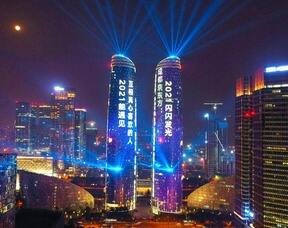
The Twin Towers is a modern building in Chengdu, Sichuan Province. It is also part of the Tianfu International Financial Center. It is located at No.966 North Tianfu Avenue. The twin tower, with a construction area of 168,000 square meters, is composed of two 220-meter super high-rise towers. The all-metal hollow outer net of the facade adopts "ice flower shape" and adopts full LOW-E hollow glass curtain wall. A light show is held on the Twin Towers every New Year.
Chengdu Global Center (The New Century Universal Center)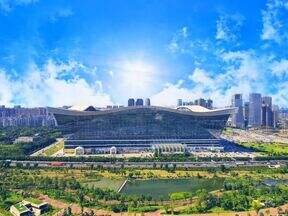
Located at No.1700, Tianfu Avenue, Chengdu, Sichuan Province, covers an area of about 1300 mu with a total construction area of about 1.76 million square meters, Chengdu Global Center is a multi-functional building integrating entertainment, exhibition, business, shopping and hotel. Chengdu Global Center was designed by Zahaha Ade and Exhibition Tourism Group, the main project was completed in 2012; officially opened in September 2013, with the shape of "flying seagulls, undulating waves", forming the style of "water basin" against the background of sunlight and waterscape. The New Century Universal Center is known as the world's largest single building, which can accommodate 20 Sydney Opera House and three Pentagon buildings.
Chengdu Century City New International Convention and Exhibition Center
Chengdu Century City New International Convention and Exhibition Center, also known as Chengdu New Convention and Exhibition Center, is located at No.198, Century City Road, High-tech Zone, Chengdu, Sichuan Province. The convention center is divided into five parts: exhibition area, international conference area, hotel and cultural facilities area, business office area and commercial residential area. Among them, the indoor exhibition area is 11,000 square meters, providing 5,500 standard booths and 8 connecting pavilions. The rear connection area of each main pavilion has a large unloading area of about 1,600 square meters. National standard fire resistance grade two, seismic fortification index of seven degrees, water, electricity, gas, optical fiber, cable facilities are complete.
Western China International Expo City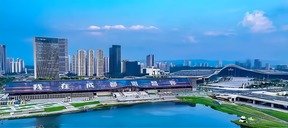
Western China International Expo City (hereinafter referred to as "Xibo City") is located at No.88, East Fuzhou Road, Tianfu New District, Chengdu City, Sichuan Province, with a total construction area of 760,000 square meters. Xibo City is an exhibition industry mainly composed of international exhibition center and Tianfu International convention Center. The exhibition center has 15 standard exhibition halls, each with an area of about 12,000 square meters, and 11,000 international standard booths. The conference center includes conference center, hotel, commercial and office rooms, etc., with a large conference hall of about 6600 square meters, a multi-function hall of about 4600 square meters, and more than 40 small and medium-sized conference rooms.
Chengdu Science City
Chengdu Science City is located in Tianfu New District of Chengdu, located in the south of the main city of Chengdu, about 25 kilometers away from the central city of Chengdu and about 30 kilometers away from Tianfu International Airport. It is an important carrier of national strategies such as Western (Chengdu) Science City and Chengdu (Xinglong Lake) Comprehensive Science Center.
Xinglong Lake
Xinglong Lake (Xinglong Lake Wetland Park) is located in Tianfu New District, Sichuan Province, damming the Luxi River. Xinglong Lake Wetland Park covers an area of 300,000 square meters, including 116,000 square meters, water area of about 4500 mu, with green space, green island, corridor and other landscape facilities; Western (Chengdu) Science City, Chengyu Comprehensive Science Center, Tianfu Xinglong Lake Laboratory around them. It is a "Tianfu green heart" with multiple functions such as flood control, ecology and landscape. Xinglong Lake is listed as the most beautiful landmark of Chengdu —— Park city TOP100.
Dongan Lake Park
Dongan Lake Park (Chengdu Dongan Lake Ecological Park) is located in Longquanyi District,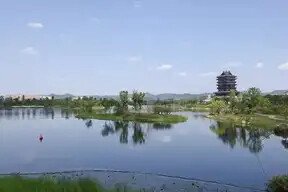 Chengdu City, Sichuan Province, with a total area of 5061 mu, green area of 3427 mu and water surface of 1634 mu. It is the urban ecological meeting room of Chengdu. By the lake, "three pavilions", library, art center, theater and other centralized have well layout here. Dong 'an Lake Park is composed of one lake and one ring, seven islands, 24 Bridges and other scenic spots. It is the opening ceremony and important event competition venue of the 31st Summer University Olympic Game .
Chengdu City, Sichuan Province, with a total area of 5061 mu, green area of 3427 mu and water surface of 1634 mu. It is the urban ecological meeting room of Chengdu. By the lake, "three pavilions", library, art center, theater and other centralized have well layout here. Dong 'an Lake Park is composed of one lake and one ring, seven islands, 24 Bridges and other scenic spots. It is the opening ceremony and important event competition venue of the 31st Summer University Olympic Game .
Climate in Chengdu
|
Month |
Jan |
Feb |
Mar |
Apr |
May |
Jun |
Jul |
Aug |
Sep |
Oct |
Nov |
Dec |
|
Temperature (Celsius) |
5.5 |
7.6 |
12.1 |
17.1 |
21.5 |
23.0 |
30.8 |
33.4 |
30.4 |
27.4 |
14.1 |
12.7 |
Tours in Chengdu ( Click to see more Chengdu tours )
China Attractions Guide
- Anhui Attractions
- Beijing Attractions
- Chongqing Attractions
- Fujian Attractions
- Gansu Attractions
- Guangdong Attractions
- Guangxi Attractions
- Guizhou Attractions
- Hainan Attractions
- Henan Attractions
- Hongkong Attractions
- Hubei Attractions
- Hunan Attractions
- Inner Mongolia Attractions
- Jiangsu Attractions
- Jiangxi Attractions
- Manchuria Attractions
- Ningxia Attractions
- Qinghai Attractions
- Shaanxi Attractions

